Vintage Charm Meets Modern Living
Historical Chicago Apartments — Where Vintage Charm Meets Modern Living
A diverse culture, endless entertainment, and lively nightlife only graze the surface of what Chicago has to offer. It is no wonder why so many decide to put down roots in the Windy City. While there is much to say about what the city offers in terms of entertainment and modern amenities, discussing living in Chicago wouldn’t be complete without addressing its rich history.
The famous Chicago Theatre, the burn marks still present on St. James Cathedral and the last wood paved street from before The Great Chicago Fire — Chicago’s rich history is found throughout the city.
All of these are must-sees for anyone who craves a bit of history. However, even if you aren’t much of a history buff, one piece of Chicago’s past that you don’t want to miss — especially if you are a Chicagoan or plan on becoming one — are the restored River North apartments, Ravenswood courtyard-style residential buildings, and other historical residences found throughout the city.
These buildings that range from abandoned factories to outdated cathedrals are preserved and rehabilitated through adaptive reuse architecture. A method of construction that offers an effortless intersection between vintage charm and modern living.
What is Adaptive Reuse Architecture?
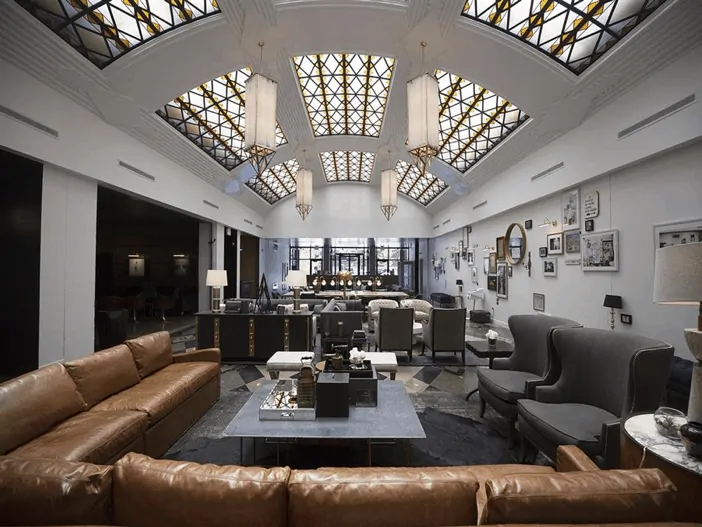
The lobby of the Chicago apartment complex, The Lawrence House—a former luxury hotel built in 1928—offers a grand lobby that has kept much of its original architectural detailing. Photo by FLATS.
Adaptive reuse architecture builds upon pre-existing buildings that have outlived their original purpose. Extensive renovations, frequently confined to the interior, give them a second lease on life by making them accommodative for modern-day needs such as housing, retail, and offices. This form of construction is significant for many reasons.
- Saves historic buildings from demolition.
- Preserves a piece of history by keeping some of the existing architectural detailing.
- Offer an exquisite aesthetic that bridges old and new.
Notably, this is also an environmentally friendly approach to accommodate our growing population. Fewer natural resources are consumed, which equates to a decrease in emissions from transporting building material. Also, less waste is produced with this method compared to a full demolition, saving landfill space.
Therefore, adaptive reuse architecture isn’t just for preserving history and creating captivating buildings — it may be the answer to protecting the health of our planet.
Living in Historical Chicago Buildings
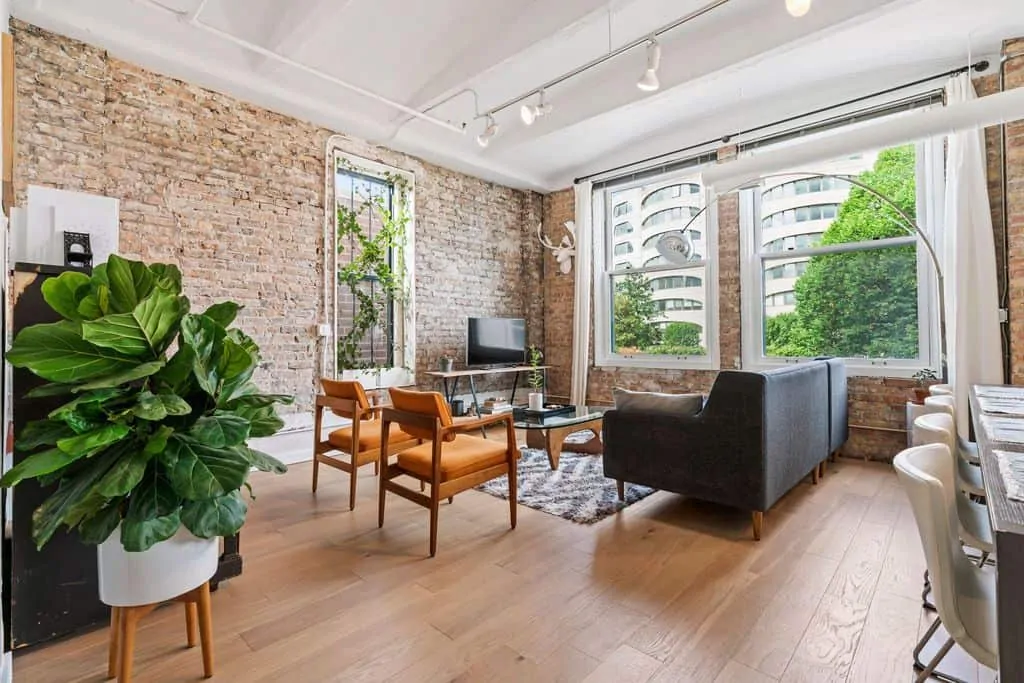
One of our recent loft sales is a great example. The worn brick walls, expansive windows, and contemporary decor shown above exemplify the mix of vintage and modern that makes historical apartments so visually captivating. Photo by Chuck Gullett.
Studios and multi-bedroom apartments are popular among the options for restored living spaces in Chicago, but you can also find Chicago lofts for sale that offer the same vintage aesthetic.
No matter if you choose a luxury condo or a cozy studio, though, these are a few benefits you can expect when living in a historical building.
A Unique Aesthetic
The preserved architectural detailing in these restored buildings is unrivaled. With the combination of elaborate construction methods used by skilled craftsmen and the high quality of materials, you won’t find the same detailing in modern-day structures that streamline the construction process.
Even if newer buildings want to duplicate the style and detail of historic builds, the expense for the skill and material is too substantial to justify for most projects.
This includes, but isn’t limited to, ornate woodwork, real stone, stained glass, and plaster. Another element that plays into the uniqueness of restored buildings is their charming imperfections, which can be summed up as Wabi Sabi — an authentic look that embraces imperfection to create joy, beauty, and rustic elegance.
This imperfect beauty can be found everywhere in vintage Chicago properties, from the aged brick walls to the weathered hardwood floors.
A Close-Knit Community
In Chicago, you can find an abundance of restored historical residences in the older parts of the city, like Ravenswood. Ravenswood offers an unusual mix of big city amenities with small town charm and as a result, this thriving and close-knit community provides the perfect place for small businesses and creatives to thrive.
The same sense of community is found in many Chicago neighborhoods where adaptive reuse architecture is prevalent in Chicago.
While the older buildings themselves aren’t responsible for this benefit, it is a perk that often comes with well-established, older neighborhoods — exactly where you will find historical buildings.
Superior Soundproofing
As construction methods and materials have evolved, modern society has moved away from brick and plaster — new projects use drywall and studs. While drywall and studs are more cost-effective and easier to handle, they pale in comparison to brick and plaster when it comes to soundproofing apartments and the like.
So whether you can’t stand noisy neighbors or you are that neighbor, an older building may be the perfect fit.
Adding Modern Touches to Vintage Buildings
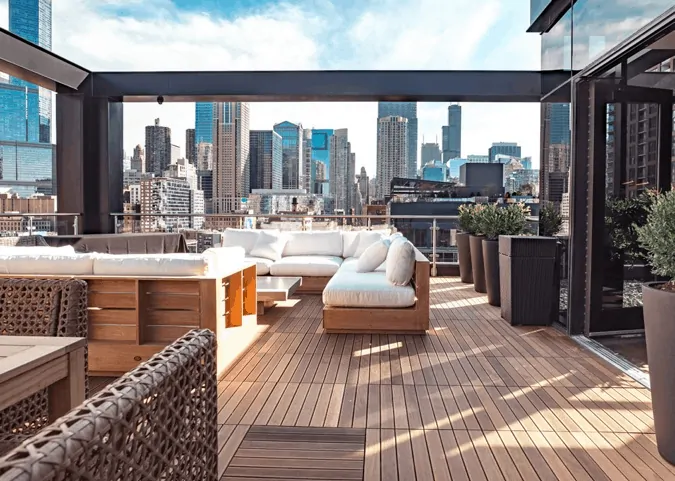
The Ardus is a former industrial warehouse that now offers a chance for apartment dwellers to live in luxury with amenities like an expansive rooftop lounge, a fitness center, and a lobby coffee shop. Photo by The Ardus.
While a unique aesthetic, upgraded soundproofing, and a close community are all great, modern amenities score high on apartment hunters’ wishlists.
The good news is that there is a selection of revamped buildings in Chicago that offer that best of both worlds. This may include practical amenities like bike rooms and gyms, as well as more luxurious amenities like rooftop lounges, pools, games rooms, and lobby coffee shops.
The historic architecture in Chicago may not be as famous as its deep dish pizzas, but it is a close second. By living in one of these unique buildings, you will experience a highlight from Chicago’s past, all while enjoying the modern amenities that the city has to offer. Historical Chicago apartments are a piece of the city’s story—and they can be part of yours too.
We love vintage + modern! If you’re looking for a unique home where vintage charm meets modern living, talk with us.

 Best Chicago Properties, LLC
Best Chicago Properties, LLC
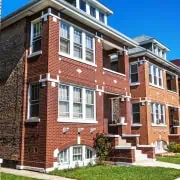
 Best Chicago Properties, LLC
Best Chicago Properties, LLC

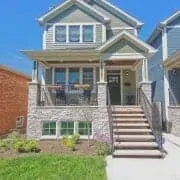 Best Chicago Properties
Best Chicago Properties
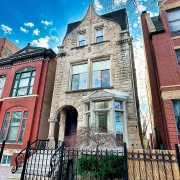 Best Chicago Properties, LLC
Best Chicago Properties, LLC Best Chicago Properties, LLC
Best Chicago Properties, LLC